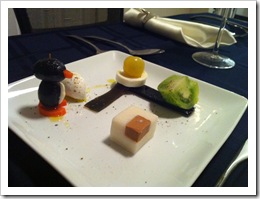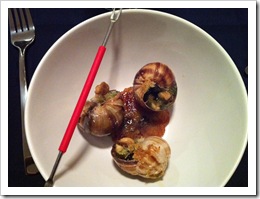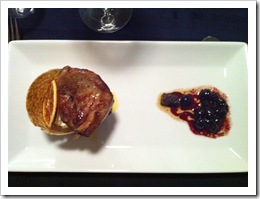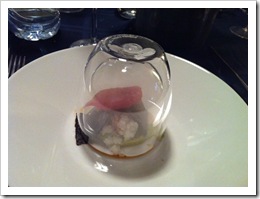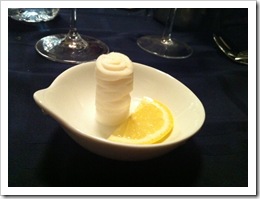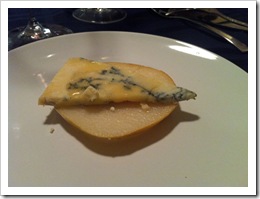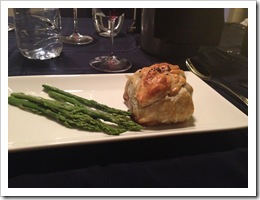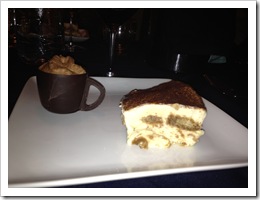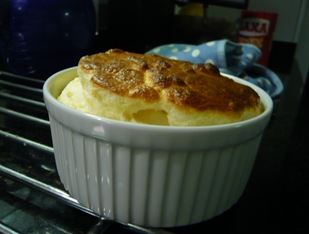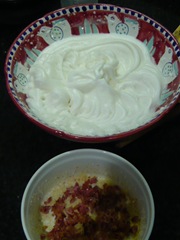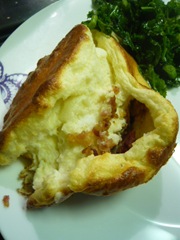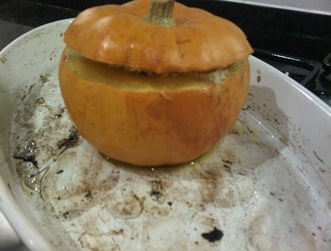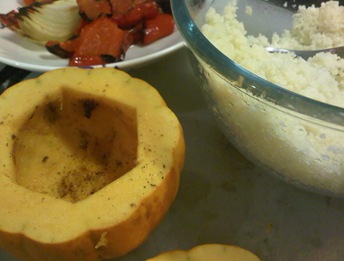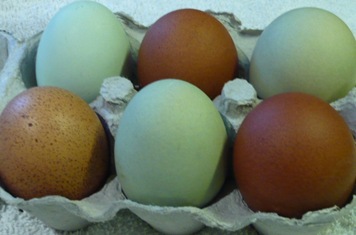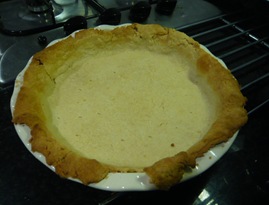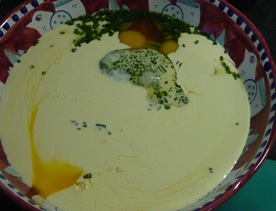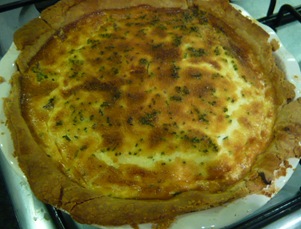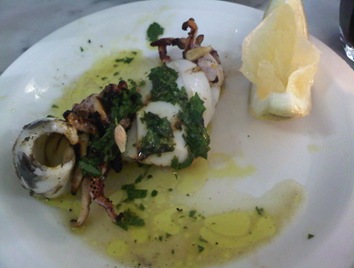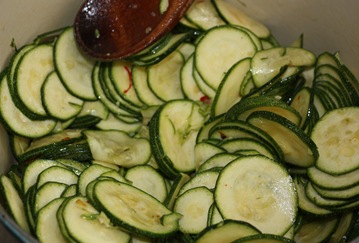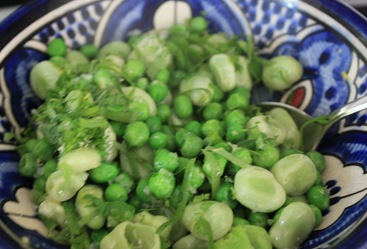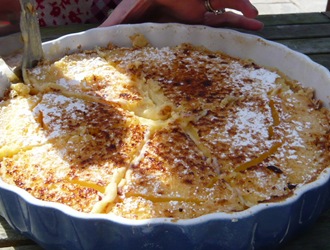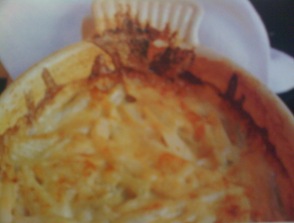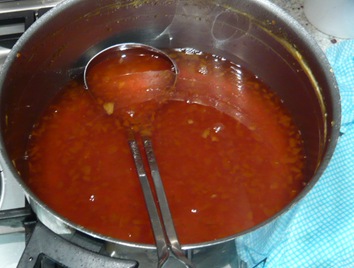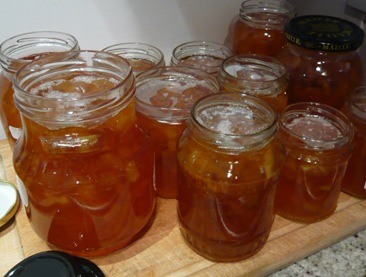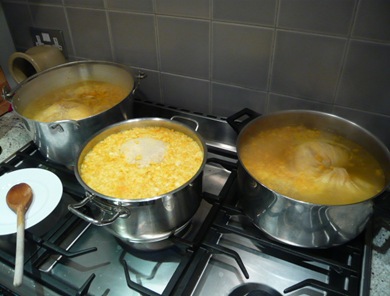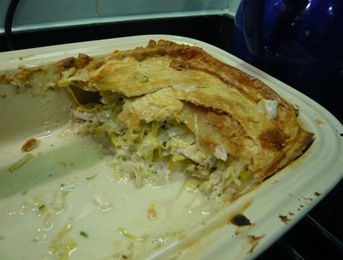On Saturday I found out that my grandpa doesn’t like cheese.
Oh, he will have it in a cooked form, say, cauliflower cheese and suchlike, but cheese for cheese’s sake, on a board, say, with crackers? No thank you (or thank yoohooo, as he’d say).
I’m not sure what’s more of a surprise: the aversion itself or the fact that it has only taken me thirty-odd years to learn about it.
I know quite a lot about his eating habits, you see, having spent a great deal of my childhood with him. There was always a rush between us four siblings to be the first at breakfast so we’d get the hallowed top of the milk (when it still came in bottles from a smiling man in a float) in the crater he made in our Alpen (always Alpen, decanted into Grandpa’s special plastic container to keep it fresh). Morning after morning he’d pretend to fall for the rubber fried egg we’d plant on the kitchen floor, tirelessly feigning surprise when we picked it up with our fingers. Next to him would be his own small brown teapot, he and Gran would always drink different tea.
Grandpa has always carved the roast on Sundays – nobody else can get roast beef so thin. We’d all watch as his fork would hover back and forth over his plate during the meal, as he made sure he’d speared a bit from every part of it before taking a mouthful – the
perfect mouthful. And I am pretty sure that he is the reason that the chocolate digestive - nay, the pudding - was invented.
On Saturday my nephew, George, entered the world. He is wonderful beyond words.

George has a few months yet before the wider universe of food begins to cross his tiny taste-buds, but what adventures await him! I hope to be along for the ride. If he’s anything like his dad he’ll have a penchant for apples (and his two middle fingers), his mum he’ll be a great cook and a mayonnaise fiend, but who knows what his dislikes will be.
The BSG tells me that babies screw up their faces at sour things as they have an inbuilt anti-poison reflex, so perhaps lemons are out for the foreseeable. I wonder when he’ll try his first bread and Marmite and if he’ll like it *fingers firmly crossed on that one*.
Perhaps he’ll be an early gourmet, like G, who as a toddler was reaching for the olives (stoneless of course). Or like Lucy who dislikes bananas and tea (not together). Who knows what will influence his tastes – or even whether they are already established; will have Grandpa’s cheeseboard-phobia? We’ll just have to wait and see.
Whilst we wait, the BSG and I are rolling out a sort of meals-on-wheels service to his parents, to get them through the days that punctuate the sleep-deprived nights.
This is the first instalment; the recipe’s grabbed from Allegra McEvedy as I am hopeless with quantities and would no doubt lead you astray with the BSG-version.
Chicken, chorizo and butterbean stew
Serves 4 (or two good suppers for the freezer)
4 chicken legs, jointed into thighs and drumsticks
2 tbsp extra virgin olive oil
250g raw chorizo sausages, thickly sliced
2 red onions, roughly chopped
2 pepper, (green or red), cut into 2cm pieces
Pinches dried oregano
Pinches dried red chilli flakes
Whole dried chillies, (optional)
120 ml white wine
2 bay leaves
2 tbsp sherry vinegar
1 x 400g can chopped plum tomatoes
1 x 400g can butter beans
500 ml chicken stock
2 oranges, grated zest only
Crusty bread, to serve
Generously season the skin of the chicken pieces with sea salt. Heat the olive oil in a large deep frying pan over a high heat and fry chicken, skin-side down for 7 minutes, until the skin is a deep golden-brown.
Season the side of the chicken facing up in the pan, turn the chicken over and fry for a further 3 minutes, or until the flesh-side is lightly golden.
Remove the chicken from the pan and set aside. Add the chorizo slices to the pan and fry on a high heat. Once the chorizo begins to release its oil, add the onion, peppers, oregano and chilli and stir well. Place a lid on the pan and leave to cook for 5–10 minutes, or until the vegetables have begun to soften.
Stir in the wine, bay leaves and sherry vinegar and bubble the mixture for 2-3 minutes, or until the volume of the liquid begins to reduce. Add the tomatoes and beans, then top up with enough chicken stock to fill the pan three quarters full and bring to a simmer.
Put the chicken back in the pan so that the flesh is in the sauce but the skin is exposed. Sprinkle over the orange zest. Bring the mixture back to the boil, then reduce the heat so the stew is gently bubbling. Simmer for 40 minutes, until the chicken is cooked all the way through and the sauce has thickened a little.
Leave the stew to rest for 15 minutes before serving with crusty bread. The stew can be made a day in advance to allow the flavours to develop.


